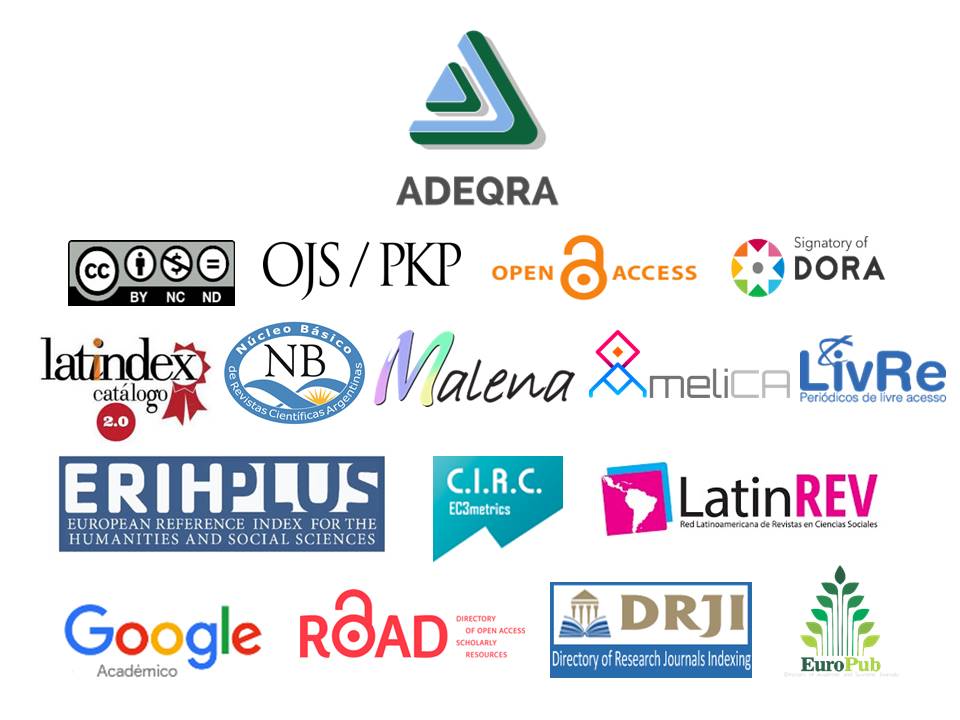Synchronous and asynchronous learning applied in general and inorganic chemistry for agronomic engineering
Keywords:
teaching process, learning process, asynchronous and synchronous activities, ICTAbstract
The process learning today, be modified by incorporation the different asynchronous and ssynchronous mechanisms available, that include the application of different digital tools in the teaching process. This implies the reorganization of classroom planning to contribute to a meaningful learning process. The use of information and communication technologies (ICT) allows managing, distributing and evaluating non-face-to-face training activities, fundamentally allowing space-time asynchrony between students and teachers. In the General and Inorganic Chemistry subject of the first year of the Agronomic Engineering career a combination of synchronous activities, videoconferences, and asynchronous, such as practical development work, forums, simulations, depending on the topic to be developed and the available tolos. In order for the student to have a vision of their progress, a series of alternative digital resources were applied as well as the creation of sources of motivation, dialogue and accompaniment. This model made it possible to analyze the educational trajectories of each student in a virtual context, as well as investigate their difficulties and strengths.
References
Alcoba González, J. (2012). La clasificación de los métodos de enseñanza en educación superior. Contextos educativos, 15, 93–106. https://doi.org/10.18172/con.657
Atkins, P. W. y Jones, L. (2006). Principios de química: los caminos del descubrimiento. Ed. Médica Panamericana.
Esteves, P. N., Sanchez, M. A. y Riquelme, D. H. (2020). Metodología de Enseñanza Dirigida en el Aula Virtual: Resultados de su Aplicación en Química General e Inorgánica. Educación en la Química, 26(2), 297-302. https://educacionenquimica.com.ar/index.php/edenlaq/article/view/95
Granda Asencio, L. Y., Espinoza Freire, E. E. y Mayon Espinoza, S. E. (2019). Las TIC como herramientas didácticas del proceso de enseñanza-aprendizaje. Conrado, 15(66), 104-110. https://conrado.ucf.edu.cu/index.php/conrado/article/view/886
Idoyaga, I. J., Vargas-Badilla, L., Moya, C. N., Montero-Miranda, E. y Garro-Mora, A. L. (2020). El Laboratorio Remoto: una alternativa para extender la actividad experimental. Campo Universitario, 1(2), 4-26. https://campouniversitario.aduba.org.ar/ojs/index.php/cu/article/view/17
Islas Torres, C. (2017). La implicación de las TIC en la educación: Alcances, Limitaciones y Prospectiva. RIDE. Revista Iberoamericana para la Investigación y el Desarrollo Educativo, 8(15), 861-876. https://doi.org/10.23913/ride.v8i15.324
Navarro, D., Marynoris, L. y Matos, S. (2017). Redefinición de los conceptos método de enseñanza y método de aprendizaje. EduSol, 17(60), 26-33.
Sangrà, A., Guardia, L. Mas, X. y Girona, C. (2005). Los materiales de aprendizaje en contextos educativos virtuales. Pautas para el diseño tecnopedagógico. Editorial UOC.
Rodríguez Matla, M. Y., Gómez Castro, G., López Domínguez, E. y Hernández Velásquez, Y. (5 a 7 de noviembre de 2014). Diseño y Desarrollo de Servicios de Seguimiento y Reforzamiento del Aprendizaje con base en Moodle. 7mo. Congreso Internacional en Ciencias Computacionales, Ensenada, Baja California, México.
Published
How to Cite
Issue
Section
License
Copyright (c) 2023 Paola Natalia Esteves, Micaela A. Sanchez, David H. Riquelme

This work is licensed under a Creative Commons Attribution-NonCommercial-NoDerivatives 4.0 International License.



